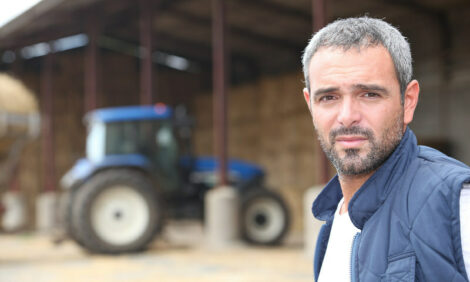



Roundtable: Industry structure, culture, wild boars team up to intensify ASF threat in China
The discovery of African swine fever (ASF) in China’s wild boar population in late 2018 adds a new dimension to the already ominous disease threat .
“ASF has moved farther in Asia during the first year of the outbreak than it has throughout the entire duration of Europe’s decade-long ASF struggle,” Clayton Johnson, DVM, Carthage Veterinary Clinic, reported last week during a roundtable discussion.
In fact, a pig carcass washed up on Kinmen Island, part of Taiwan, in early January, he reported. Following testing, Taiwan’s Council of Agriculture reported that the virus was “100% similar to the isolate strain in mainland China.”
To explore the situation further, Johnson joined his Carthage colleague, Neal Benjamin, DVM, and Chris Rademacher, DVM, Iowa State University, for a roundtable discussion following their recent visits to Nanchang, China. The roundtable, which was organised by Pig Health Today and sponsored by Zoetis, was a follow up to an earlier podcast, “ASF threat: Three US swine vets share insights from the frontline.”
“If I had one take-away,” Benjamin said of his visit, “it would be that we definitely don’t want it [ASF] to wash up on our shores.”
Fuzzy reporting
Although China’s outbreak poses significant risk of exposure to the US, the veterinarians reveal there also are many lessons to apply. The challenge is getting a handle on where and how many ASF cases there are in China, they said. That’s primarily due to the structural makeup of the country’s hog production and its culture, but reports of ASF entering the country’s wild boar population have made it even more difficult to assess the virus’ prevalence and transmission rate. Having the government managing the data hasn’t been an effective or reliable solution.
For example, Rademacher cited the government-reported ASF cases as of December totalled approximately 100, located in more than 20 provinces and four municipalities, including Beijing. “The most recent official numbers I’ve heard is about 600,000 animals were euthanized [in China due to ASF],” he added.
However, but those numbers conflict with anecdotal reports from the field. The three US veterinarians and their Chinese counterparts wonder whether all of the ASF cases are being officially reported, particularly any found within a control zone following an initial case. Some believe the tally could be as much as 10-fold higher. Benjamin advised caution with word-of-mouth estimates but said the number of ASF cases in China is “likely much more widespread than is being reported in the media.”
He added that even though China has many modern, integrated swine companies using all the latest technologies, 99% of the pig farms produce less than 500 pigs a year and 95% produce less than 50 pigs. “There are still a lot of backyard-type farmers out there,” Benjamin said.
Addressing whether ASF elimination in China is even possible, Rademacher said, “I really didn’t walk away feeling very hopeful.”
Swill feeding is a problem
Certainly, ASF is an equal-opportunity virus, causing problems for all sized operations, but China’s small- and mid-size operations are getting hit the hardest. It’s not to go unnoticed that the large integrators often are located within the same areas as the smaller producers, which expands the exposure challenge.
Part of the reason small- and mid-size producers are most at risk can be due to less intensive biosecurity practices, but those operations also tend to be located at the outer rings of large cities. Those producers rely heavily on swill feeding and uncooked restaurant leftovers, Rademacher noted, which was the likely exposure route for the ASF cases reported near Beijing.
Ingrained in the Chinese culture is to let nothing go to waste, the panellists said, so convincing hog farmers that swill feeding poses an ASF risk will be a challenge. “They’ve talked about banning swill feeding to minimise the spread,” Rademacher said. But swill feeding will be “a big hurdle for them in any sort of control and eradication effort moving forward.”
Benjamin relayed that a Canadian presenter at a swine veterinary conference in China reported that his country is planning to eliminate swill feeding. With an estimated 20 US states still allowing the practice, Benjamin believes it is time to seriously consider eliminating swill feeding here at home.
Certainly, in the US, feed and ingredients have received significant attention because the industry imports so much from China. But the Chinese have been dealing with numerous other virus-transmission routes and have pushed feed low on the priority list. They did ban porcine plasma from swine diets and, more recently, recorded positive-ASF tests from feed ingredients and complete feed, Rademacher noted, so they are coming to terms with other potential vectors.
He added that pressure is mounting from foreign customers who purchase feed ingredients from China. They’re asking about biosecurity measures and manufacturing processes, trying to identify any potentially risky ingredient providers, especially if located within ASF-infected areas.
“Porcine epidemic diarrhea virus was in China for a long time before it, unfortunately, hitched a ride” and entered the US, Rademacher said. “So, that [feed ingredients] will be a clear, present and continual threat for the US swine industry.”
Protecting the US homeland
People and contaminated meat products present an on-going ASF-transmission risk both within and outside of China. “It only takes one person to bring in incorrect product,” Benjamin said. “We know that ASF can survive a lot of the standard cooking procedures that we would normally use for pork products.”
Neither Benjamin nor Rademacher knew of any clear strategy that the Chinese are implementing to test or monitor ASF in pork products and prevent their distribution.
Benjamin noted that professionals in China’s pig sector are nervous that with the upcoming Chinese New Year and Spring Festival, more ASF flareups could result. That’s because culturally, sharing specialty and cured pork products is a significant part of their holiday celebrations. “You literally have a billion Chinese residents moving around, traveling back and forth across the country,” Johnson noted.
Similar concerns arise as travelers enter the US, where screening measures fall upon US Customs and Border Protection agents. Both Benjamin and Rademacher have noticed more messaging about foreign animal diseases at airports, albeit not specifically about ASF. They also cited more beagles sniffing around luggage carousels and more random individual checks.
“These are all good first steps,” Rademacher said, pointing out that pork-industry associations have been talking with US Department of Agriculture (USDA) and Animal and Plant Health Inspection Service (APHIS) to get more messaging and checks in place.
However, Benjamin learned from a recent Washington, DC, trip that there are only about 120 beagles responsible for monitoring all of the incoming cargo for the entire US, 24 hours a day. Securing funding for more trained beagles is another effort that industry associations are working on to prevent accidental introduction of ASF.
Lessons learned
Without question, China’s ASF dealings present sobering news almost daily, but Johnson added, it also offers “a case study of what’s being tried and what’s working or not working.”
One of the lessons is to ensure that small- and mid-size US producers are informed and part of the communication plan. “We don’t always think about smaller, organic, niche-market producers who are not necessarily members of pork-industry groups,” Benjamin said. It’s critical to develop those contacts and build an information base before there’s an outbreak. That includes the show-pig sector.
The threat of ASF “really reinforces the need for premises identification (ID),” Rademacher said. He believes that long term, discussions need to consider whether premises ID should be voluntary or made mandatory in order to market any type of meat.
Although it’s known that the ASF virus is a large, complicated virus that is extremely resilient in the environment, we need to understand more, such as what is the infectious dose in feed and water. That means continuing to fund research and education, Rademacher said, as well as working with USDA/APHIS when possible.
The US needs a thorough evaluation of its exposure risks. “As we think about developing biosecurity strategies to try and keep it [ASF] out of the US and out of our farms, we need to think about long-term strategies that we can continue to implement 2, 5, 10 years down the road,” Benjamin said. “So, we really need to look at everything.”
Johnson’s advice for the US swine veterinarians and producers today is to know where your risks are and eliminate as many as possible “and use good, old-fashioned biosecurity methods of chemical disinfectants, and our friends heat and downtime,” he added.
Other things to plan for now include pig-housing options and a way to keep feed bins full to withstand a short-term stop-movement of pigs, Rademacher suggested.
Future needs
The three veterinarians agreed that an ASF vaccine is necessary to control, much less eliminate, the virus. It appears to be endemic in China and could become so in the rest of Southeast Asia, Johnson said.
“Vaccine is our only [long-term] solution,” he added. That won’t be quick or easy, as he pointed to Europe’s efforts for years without success.
“Until we have a vaccine, we won’t be able to get it under control anywhere; and we certainly won’t be able to respond to it as we would like to in the US.”









